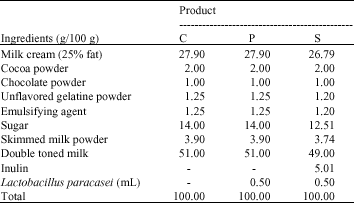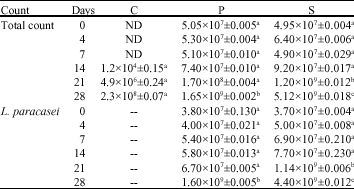Research Article
Development of Probiotic and Synbiotic Chocolate Mousse: A Functional Food
Food Biotechnology Laboratory, Department of Home Science, Sardar Patel University, Vallabh Vidyanagar-388120, Gujarat, India
T. Parekh
Food Biotechnology Laboratory, Department of Home Science, Sardar Patel University, Vallabh Vidyanagar-388120, Gujarat, India
R. Subhash
Food Biotechnology Laboratory, Department of Home Science, Sardar Patel University, Vallabh Vidyanagar-388120, Gujarat, India















